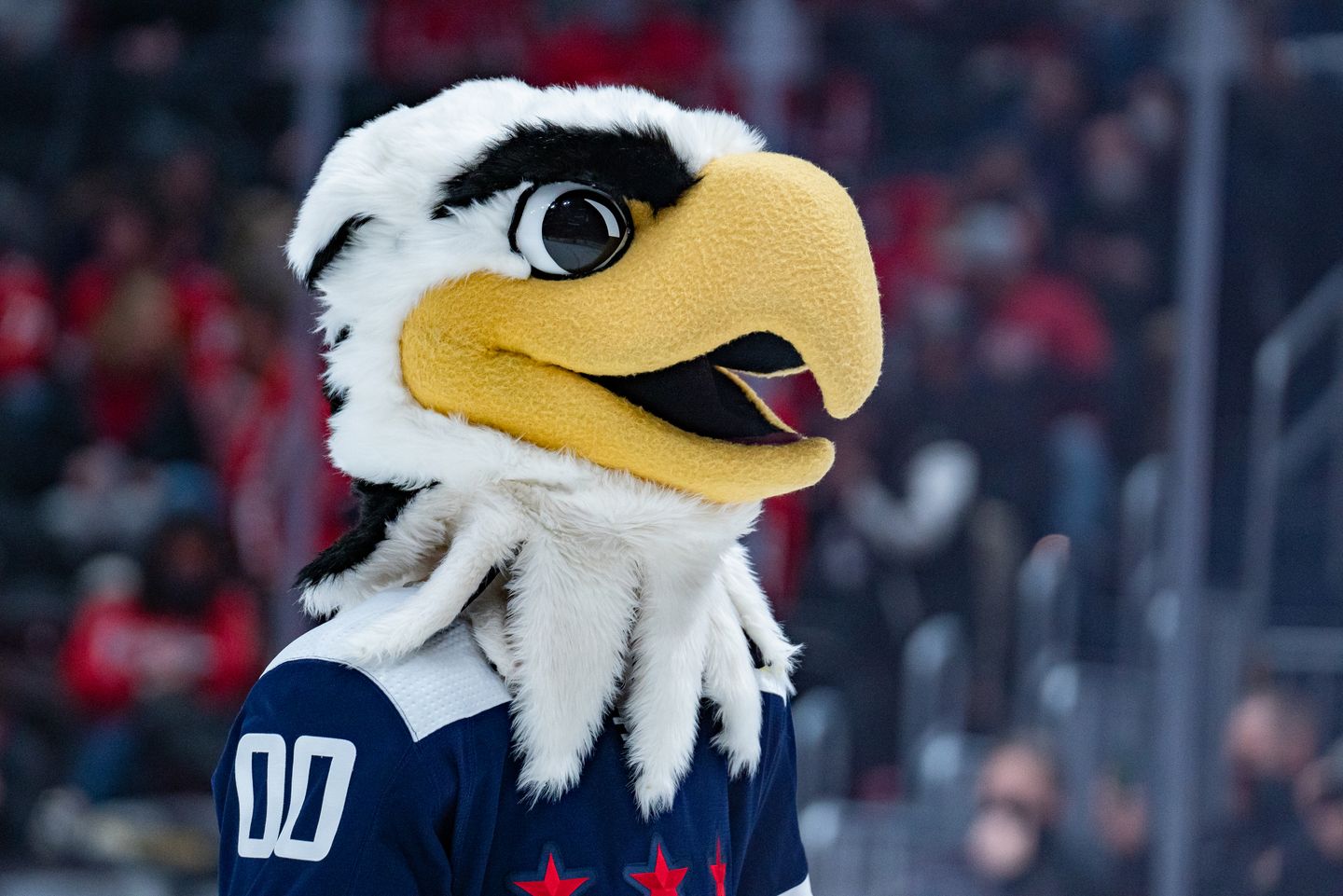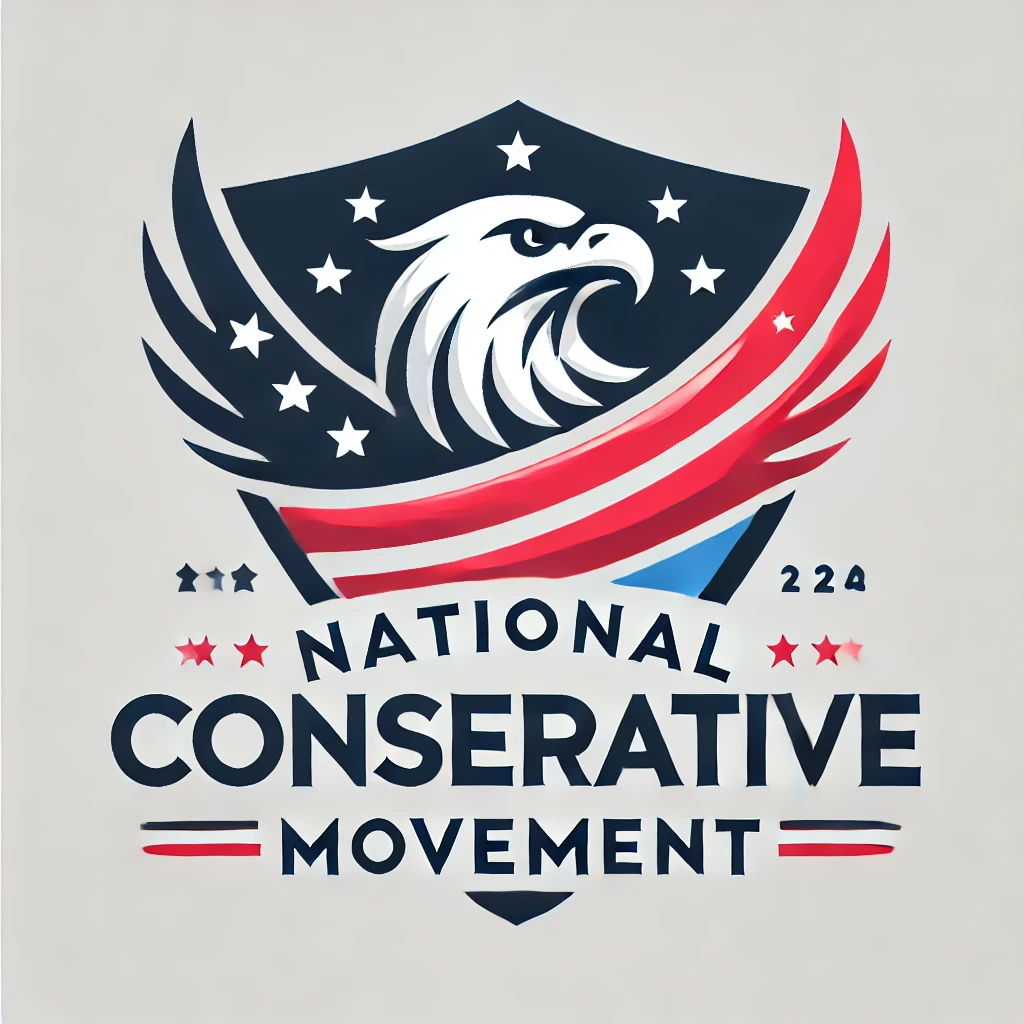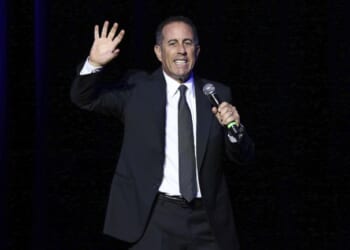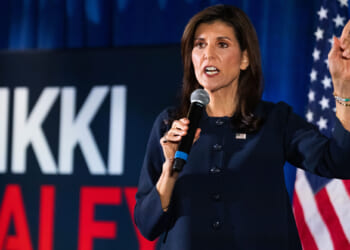
The players on your favorite sports team will leave one day. Trades, retirements and injuries are an inevitability. But the humble mascot — that oversized animal or caricature that’s a staple at every sporting event — isn’t going anywhere.
More long-anonymous mascot performers are speaking out when they hang up the costume. They want the sports-loving world to know about the unique challenges of performing feats of athleticism in a sweaty 30-pound suit, the beauty of connecting with fans and the art form that is being a mascot.
It sticks with you when a 6-foot-tall chicken steps out of a helicopter and lands on a minor-league baseball field. That was the case for then-15-year-old Kenn Solomon, who returned the next night with a pen and paper to take notes about the San Diego Chicken.
Solomon turned his passion for physical comedy and athletic antics into a 30-year career with the NBA’s Denver Nuggets. Not as a player, coach or analyst, but as Rocky: the mountain lion mascot.
The now-retired Solomon is the vanguard of a group of performers who are simultaneously cursed and blessed by anonymity at ballparks, courts and rinks around the country. They are mascots — sports’ lovable clowns who are sworn to secret identities by their employers.
Professional athletes
The NBA mascots might not keep up with LeBron James on the court, but they’re still performing feats of athleticism that the average fan could only dream of completing. James doesn’t have to dress as a big cat when he leaps towards the rim, either.
The league used to hold a dunk contest for mascots during the annual All-Star Weekend. Solomon speculated that the NBA killed it because the costumed performers were more dedicated to the event than the players.
During his tenure as Rocky, Solomon performed highlight-worthy dunks and jaw-dropping stunts that would be impressive even if he weren’t dressed as a mountain lion.
His “Nutcracker” routine — which saw him dance to the classic ballet and culminated with a crotch-first drop onto a balance beam — was a crowd favorite.
One viral moment showed Rocky descending from the rafters in a harness. The only problem? Solomon had lost consciousness in the harness. The resulting video showed a limp mountain lion being lowered to the court.
The 59-year-old now hosts the “Between the Fur” podcast. Other current and former mascot performers join him to discuss similar failures and bask in the successes, which are never as simple as they seem.
“I took it as an art. I get frustrated when people go, ’They could put anybody in there,’” he said. “There’s a lot of thought, a lot of practice, a lot of stuff behind the scenes that people just will never understand. A lot of effort goes into a two-minute skit.”
Fans didn’t see the physical toll of the job, either.
“I had to work to keep weight on because you just sweat so much,” Solomon said. “After games, I would be on IVs a lot of the time. I’d need oxygen sometimes, too.”
And he worked indoors.
The Washington Nationals’ Racing Presidents are at every home game. Performers don 12-foot, 50-pound costumes throughout the District’s swampy summers. They manage one footrace per game without succumbing to heat exhaustion.
“It’s not like you have a few beers and jump into a costume and dance,” said one current Racing President who asked to remain anonymous. “That’s the exact opposite of what you need to do to be successful. You need to be hydrated. You need to be on point. Everyone has eyes on you at all times.”
The Nationals have to teach prospective presidents how to run. Otherwise, they start leaning lower and lower. The inevitable fall isn’t far behind.
“If you have previous athletic experience, that’s probably helpful, knowing you can make the run from center field to third base,” said Katie O’Rourke, the Nationals’ senior manager of game presentation. “It’s a long way to run, so having the stamina and athleticism to do it is a big component.”
The competitive nature of mascots can’t be understated, either. Several performers have noted that they take their silly job — and the often exaggerated feats of athleticism — seriously. They just have to make the intensity work for the character.
“There were times with the half-court shot where I couldn’t hit the broad side of a barn, and I would get frustrated with myself and the boos in the crowd,” Solomon said. He’d feed off that while staying in character. Rocky would knock a fan’s hat off their head, throw popcorn into the air or kick a chair.
“Just showing that I get it, you guys, I’m frustrated too here,” Solomon said. “People love that.”
The people love a villain, too — a role that many mascots leap at when given the opportunity. The NFL calendar is riddled with halftime games between mascots and Pee-Wee football players. The subsequent videos are social media gold.
Fans love to hate the Indianapolis Colts mascot, Blue, as he shoves a well-padded child into the turf. Solomon, as Rocky, famously got in on the action, too. He taunted a child with a “Karate Kid” celebration after pulling him down during a game at the Denver Broncos’ stadium in 2015, flashing a crane-style scissor kick after the play.
Solomon admitted that the kids talk smack in the pregame tunnel. The mascots return the favor — silently, of course.
“Those kids, they’re just having fun, and the characters are having fun,” Solomon said. “We also believe, as characters, that we’re doing what every adult in the crowd wants to do but can’t.”
It’s about finding a balance between having fun and bullying a child, the long-time performer said. That’s a fine line that many teachers and parents can relate to.
Football and basketball mascots’ competitive streak is typically limited to interactions with fans. Baseball’s racing characters — like the Racing Presidents and the Baltimore Orioles’ Camden Franks — get to take it out on each other.
Though the entertainment advisers at the teams work skits into the races, the results aren’t predetermined. The racers take their runs seriously with some performers tracking the standings.
“Your adrenaline is pumping. Your heart is racing. You might need to go to the bathroom quick. Your whole body just kind of flips into a different mode,” one Racing President who asked not to be named told The Washington Times. “When the gates open and we hit the warning track, your whole mind just goes blank. You can’t hear anything. You’re in the zone. Sometimes you forget to breathe.”
The presidents aren’t above racing dirty. The performers are known to egg each other on throughout the season. One year, a performer thought they could outrun an opponent on a bicycle. The Nationals’ game presentation staff set it up. The president on foot toasted his bike-riding compatriot.
With 81 races in a season, the performers and their handlers are constantly scheming up new ways to keep the in-game entertainment fresh.
“It’s not just like, OK, here they are and they run and they finish and they’re done. There’s excitement and unpredictability in every race,” the anonymous performer said.
Logistics of sweat
No, the Nationals cannot wash the Racing Presidents’ oversized heads. To complicate matters, individual performers aren’t guaranteed to play the same character at any given game. Some days a racer might be Teddy Roosevelt, other days they’ll suit up as George Washington.
The characters’ jerseys and pants are washed after every appearance, but the heads require more faith. And the occasional prayer.
The heads are doused in a disinfecting spray and left in front of constantly blowing fans between games. A special formula is applied to the outside, but the presidents’ skulls can’t get wet.
“After a couple games of a homestand in July, they get real stinky real fast,” O’Rourke said. “So we stay on top of it and make sure that we get them aired out and disinfected so that everyone’s comfortable and you’re not smelling anything bad when you suit up.”
Suiting up in a stadium, where teams often have locker rooms for performers, is one thing. Taking the show on the road presents new problems.
Solomon considers himself a “purist.” The performer in the suit should never talk and should remain anonymous to keep the illusion alive at all costs, he says. That became an issue in the early days when he’d have to change in a school bathroom or a cramped van for an off-site event.
“We went through some really extensive lengths to keep the identity secret,” Solomon said. “The reason is simple: it’s the magic. Keeping the character the character as much as possible.”
Everybody in the crowd knows that there is a person in the suit. But Solomon, with other performers who wished to remain anonymous, said they wanted to maintain the suspension of disbelief for their audience.
“I just never wanted to look like somebody in a costume,” Solomon said. “I couldn’t stand the thought of people looking at me like that.”
To share tips and industry secrets about keeping the magic going, NBA mascots have gathered at an annual offseason conference since the mid-1990s. The NFL, NHL and MLB mascots have similar secret gatherings.
Making a mascot
Solomon saw the role of a mascot shift throughout his career. There were only a handful of real athletes in suits when he started; then a troupe of acrobats stormed the league. It eventually leveled out with performers focused on blending physical comedy with stunts.
The modern mascot remains a jack-of-all-trades. The physical comedy is still a necessity, but so is social media savvy and the ability to cope with bureaucracy. Teams are more precious about their mascots — and safety — now.
“It’s all the hoops you have to jump through; that was the hardest,” Solomon said, recalling when he wanted to snowboard down stadium steps. “Just trying to get things approved as things progressed. It was just kind of sad to see some of the comedic and stunt things pulled off the menu.”
The increased sensitivity of modern audiences also necessitated some recalibration. Solomon recalled one skit that he was, understandably, asked not to repeat.
It started off routinely — he lined up a row of dancers on their hands and knees as if he was going to flip over them. Instead, he pulled out a hidden Polaroid camera, took pictures of them from behind and handed the risque photos to the audience as a souvenir.
“Can’t do that one anymore,” Solomon confessed.
Nowadays, mascots are being asked to perform for audiences of millions instead of thousands. Their content has to play well on social media, too.
Even as the roles change, the mascots thrive as fan favorites. The Orioles debuted the Camden Franks last season. Their surprise first race on Memorial Day sent fans into a frenzy.
Ten months later, more than 200 people applied to become one of the racing hot dogs.
The interview process is unique. Performers don’t just have to run through the outfield. They have to embody the character and flash their personality in the suit.
That’s a skill that doesn’t come naturally. Facial expressions are off the table and other movements are more limited, relying on exaggeration. There’s no degree program that teaches you how to kneel down without toppling over when a 6-foot-tall sculpture resembling Thomas Jefferson is sitting on your shoulders.
“Obviously, that’s difficult. And it can be pretty taxing, physically,” the anonymous Racing President said. “But you need to leave every interaction in a positive way.”
Live sports present a tricky problem for marketing and fan experience experts who want to send every fan home happy.
“Wins and losses, those things happen,” said Mark Fine, the Orioles’ chief marketing officer. “What we can control is ultimately the mascots themselves and the experience that people have here at the ballpark.”
Franchises are willing to pay for performers who can thread that needle. The Orioles’ job listing for the Camden Franks opening offered $15 an hour, but full-time performers can make a healthy living.
When Solomon retired, the Nuggets offered a salary range between $70,000 and $130,000 for the next Rocky.
Community service
No mascot is the same. Every performer — and every oversized suit — is different. But those closest to the big birds, presidents, hot dogs and mountain lions see something special in their work.
“I had The Bird at my wedding,” Fine said, noting that he wasn’t working for the team at the time. “Everybody just immediately blew up because they knew how important the Orioles were in my wife and I’s life. I am one of many, many people with similar stories because he represents the Orioles in a wonderful way.”
Those moments stick with the performers, too.
“The smiles are like nothing else,” said Fine, who was also a mascot performer with some minor league affiliates.
One Racing President fought back tears while considering his favorite memories from 16 seasons with the Nationals.
“You’re doing something for other people. It’s like a community service,” he said. “The players come and go. How much interaction you can have with a player is limited. But with the Racing Presidents, you can meet them every game. They’re at birthday parties and community events. They resonate.”
Every top-tier mascot seems to bring the same love of the game to their performances. Something has to carry you forward when you’re sweating bullets, sprinting in the final leg of a mascot race or receiving boos as the Bozo tied to a losing squad.
“It’s about creating long-lasting, emotional ties to the team,” Solomon said. “Players will come and go, but the mascot remains.”












